Movie, TV show, tourism attraction, books and son on…If we can mention one of the principal reason Paris is well represent in popular culture from all over the world, this is undeniably fashion. Paris has been smugly claiming to be the world’s style capital since the rule of that famed self-promoter Louis XIV. The French royal court seized control of the luxury goods market and arguably became the arbiter of taste and style across Europe. As the king’s canny finance minister, Jean-Baptiste Colbert, observed: “Fashions were to France what the mines of Peru were to Spain” – a wildly lucrative domestic and export commodity. One of the most sought-after couture fashion shows, Paris Haute Couture Week is a lavish affair, mostly attended by the porte-monnaie sur pattes, or ‘walking purses’. For many of these buyers it is an investment, a form of art collection. Every year Haute Couture exhibitions or events are held at some of the most famous and extravagant museums and exquisite locations across the world like the Palais de la Porte Dorée, Palais Galleria and The Musée Yves Saint-Laurent in Paris, The Museum of Decorative Arts in Bordeaux, the Victoria and Albert museum in London and the national museum of Scotland in Edinburg. A few Parisian museums and art galleries can also host or arrange tours related to fashion within their institutions. The exhibitions are magical, theatrical, historical and cinematographic highlighting the couturiers creative process, some previously unseen pieces as well as some extraordinary vintage designs.
The concept of haute couture (‘high sewing’ or ‘high dressmaking’ or ‘high fashion’) was invented in Paris. A grand couturier is a member of the French Chambre syndicale de la haute couture, part of the Fédération française de la couture, du prêt-à-porter des couturiers et des créateurs de mode. Though the term Haute Couture is synonymous with the French culture, it may come as a surprise that it was actually an Englishman named Charles Frederick Worth who in 1858 founded the first true Couture House at number 7, rue de la Paix in Paris. The term has become a ‘protected name’ in France, meaning that it can only be used by companies that meet certain well-regulated standards. The Fédération de la Haute Couture et de la Mode, the most important fashion organization in France, is responsible for regulating the haute couture industry in Paris. It seeks to promote French fashion culture, where Haute Couture contributes to bolstering Paris in its role as worldwide fashion capital. Haute couture, born 150 years ago, is so still very much alive today. Conceived at a time when almost everything was made by hand, the art has perhaps taken on a new meaning in a modern society that’s driven by mass production. The ability to dream and the necessity of having something to dream about – essentially, what haute couture represents – is vital to human existence. As the great Karl Lagerfeld put it, “Couture dresses are a dream, and that’s very important – because dreams are needed.” These globally-renowned institutions are uniquely French luxury fashion houses that all had their beginnings in Paris, and they were all founded by the person whose name they still bear today. To ensure the next generation of couture clients remains connected, the FHCM pays close attention to societal trends, technological advances, digital platforms, and their links with fashion and creativity. “In a turbulent world such as ours, it is very important for our audience to rely on points of reference in which it believes, pillars on which it can count, institutions capable of building bridges between heritage and the contemporary, and to anticipate the upcoming world. This is the way the FHCM sees its role,” explains executive president of the FHCM, Pascal Morand.
Furthermore, to be considered haute couture, three main requirements need to be met:
1.The house must design two collections a year, with a minimum of 35 designs in each collection, including both day and evening looks.
2.These designs must be produced on a made-to-order basis for private clients, one at a time, with more than one fitting (typically, at least three).
3.The couture house must use an atelier – a workshop that employs at least 15 full-time staff. They must also have at least 20 technical workers at one of their workshops.
There are only 14 designers who bear the label of haute couture. Here is 5 of the most famous one that made the French Haute Couture and general Fashion elegance what it is today.
The concept of haute couture (‘high sewing’ or ‘high dressmaking’ or ‘high fashion’) was invented in Paris. A grand couturier is a member of the French Chambre syndicale de la haute couture, part of the Fédération française de la couture, du prêt-à-porter des couturiers et des créateurs de mode. Though the term Haute Couture is synonymous with the French culture, it may come as a surprise that it was actually an Englishman named Charles Frederick Worth who in 1858 founded the first true Couture House at number 7, rue de la Paix in Paris. The term has become a ‘protected name’ in France, meaning that it can only be used by companies that meet certain well-regulated standards. The Fédération de la Haute Couture et de la Mode, the most important fashion organization in France, is responsible for regulating the haute couture industry in Paris. It seeks to promote French fashion culture, where Haute Couture contributes to bolstering Paris in its role as worldwide fashion capital. Haute couture, born 150 years ago, is so still very much alive today. Conceived at a time when almost everything was made by hand, the art has perhaps taken on a new meaning in a modern society that’s driven by mass production. The ability to dream and the necessity of having something to dream about – essentially, what haute couture represents – is vital to human existence. As the great Karl Lagerfeld put it, “Couture dresses are a dream, and that’s very important – because dreams are needed.” These globally-renowned institutions are uniquely French luxury fashion houses that all had their beginnings in Paris, and they were all founded by the person whose name they still bear today. To ensure the next generation of couture clients remains connected, the FHCM pays close attention to societal trends, technological advances, digital platforms, and their links with fashion and creativity. “In a turbulent world such as ours, it is very important for our audience to rely on points of reference in which it believes, pillars on which it can count, institutions capable of building bridges between heritage and the contemporary, and to anticipate the upcoming world. This is the way the FHCM sees its role,” explains executive president of the FHCM, Pascal Morand.
Furthermore, to be considered haute couture, three main requirements need to be met:
1.The house must design two collections a year, with a minimum of 35 designs in each collection, including both day and evening looks.
2.These designs must be produced on a made-to-order basis for private clients, one at a time, with more than one fitting (typically, at least three).
3.The couture house must use an atelier – a workshop that employs at least 15 full-time staff. They must also have at least 20 technical workers at one of their workshops.
There are only 14 designers who bear the label of haute couture. Here is 5 of the most famous one that made the French Haute Couture and general Fashion elegance what it is today.
1) Coco Chanel : Gabrielle to the legend with two C's
Chanel is a company of high fashion, perfumes, luxury products, accessories and ready-to-wear. Gabrielle Chanel, no doubt one of fashion’s greatest women, was a true revolutionary and a face of the feminist movement for 40 years.
Her style? Simple, elegant, androgynous. Coco Chanel participated in the revolution of women's fashion by replacing the traditional corset with the comfort and elegance of simple dresses or suits. She introduces in her collections the Rodier Jersey, the tweed, the buttons and the uniform bands, the cardigans, the costume jewels, the pants for women and the fashion of the short hair. In 1910, after learning how to use a needle and imitate a model, she opened her first hat store, named "Chanel Mode", at number 21 rue Cambon in Paris. Three years later, she opened a new boutique in Deauville. Eager to liberate women's bodies, she introduced sportswear into her collection and her jersey garments revolutionized women's relationship to their bodies and their way of life. In 1915 she set up her first fashion house in Biarritz, before moving it three years later to 31 rue Cambon.
From 1920, Coco Chanel became financially independent and developed her activities, notably by launching her first perfume, in collaboration with perfumer Ernest Beaux, "a woman's perfume with a woman's scent"; and so was born Chanel N°5, revolutionary by its composition and its name. Many other iconic perfumes will follow. She made history with her little black dress in 192. In 1983, after the death of Coco Chanel, the fashion house approached Karl Lagerfield to oversee production. After his death in 2019, Lagerfeld was succeeded by Viriginie Viard, his closest collaborator and the woman he described as “my right arm…and my left arm”. Altogether less extrovert than her predecessors, her approach, says Chanel ambassador Kristen Stewart is “action versus talk”. That action is anchored in the same elegant essence that has sustained Chanel for over 100 years, bridging a deep love and respect for luxury craft with a spirit of freedom, nonchalance and ease. Internationally known, Chanel remains one of the emblematic brands of luxury and haute couture.
Her style? Simple, elegant, androgynous. Coco Chanel participated in the revolution of women's fashion by replacing the traditional corset with the comfort and elegance of simple dresses or suits. She introduces in her collections the Rodier Jersey, the tweed, the buttons and the uniform bands, the cardigans, the costume jewels, the pants for women and the fashion of the short hair. In 1910, after learning how to use a needle and imitate a model, she opened her first hat store, named "Chanel Mode", at number 21 rue Cambon in Paris. Three years later, she opened a new boutique in Deauville. Eager to liberate women's bodies, she introduced sportswear into her collection and her jersey garments revolutionized women's relationship to their bodies and their way of life. In 1915 she set up her first fashion house in Biarritz, before moving it three years later to 31 rue Cambon.
From 1920, Coco Chanel became financially independent and developed her activities, notably by launching her first perfume, in collaboration with perfumer Ernest Beaux, "a woman's perfume with a woman's scent"; and so was born Chanel N°5, revolutionary by its composition and its name. Many other iconic perfumes will follow. She made history with her little black dress in 192. In 1983, after the death of Coco Chanel, the fashion house approached Karl Lagerfield to oversee production. After his death in 2019, Lagerfeld was succeeded by Viriginie Viard, his closest collaborator and the woman he described as “my right arm…and my left arm”. Altogether less extrovert than her predecessors, her approach, says Chanel ambassador Kristen Stewart is “action versus talk”. That action is anchored in the same elegant essence that has sustained Chanel for over 100 years, bridging a deep love and respect for luxury craft with a spirit of freedom, nonchalance and ease. Internationally known, Chanel remains one of the emblematic brands of luxury and haute couture.
2) Christian Dior
Belonging to the Arnault group, the Dior brand is composed of several different companies closely linked to each other: Christian Dior SA (holding company managing LVMH and representing the Arnault family's share), Christian Dior Couture (subsidiary of Christian Dior SA), as well as Dior Joaillerie, Dior Montres or Parfums Christian Dior (subsidiaries of LVMH).
Created in 1947 by Christian Dior, a passionate fashion designer, his ambition was to bring a wind of innovation. The brand tries to transmit the happiness to which France aspires through its creations. The models of the house are synonymous with elegance and lightness. In this case, Dior goes so far as to create a new trend that will be called the New-Look style, name given by Carmel Snow, then editor-in-chief of Harper's Bazaar. It will then be synonymous with femininity and seduction. It was partly the Dior brand that helped give French haute couture the place and international reputation it has today. Christian Dior's career in the world of haute couture began in 1938, when he was hired by the couturier Robert Piguet as a pattern maker and designer. He will know his first success with his "black and white houndstooth suit". During the war, the designer worked for another haute couture house, that of Lucien Lelong in Paris. In 1945, Christian Dior met Marcel Boussac. Boussac was convinced of Christian Dior's talent and decided to invest 60 million francs to create a couture house. This was the opening of the first Dior house, at the famous address of 30 Avenue Montaigne in Paris. Then, in parallel to its clothing sector, the brand launched into perfumery. In this case, Miss Dior was a real success. Dior does not only create perfumes, but also real fashion phenomena. The essences Miss Dior from 1947, Poison 1985 or more recently J'adore ensure it a place of choice among the best-selling perfumes in the world. Similarly, Eau Sauvage is one of the most popular men's fragrances and is still in the top 3 most worn fragrances in France, even though it was created 50 years ago. The Dior brand seems totally timeless. To buy a Dior product is to buy a luxury item that no one can resist and that has a universal appeal. In fact, its perfume Poison will be displayed at the bottom of all the necks of women in the 80s.
If the Dior brand is so appreciated, it is undeniably because it conveys the love of beauty and the desire to bring dreams to life. In addition, we no longer count the prestigious muses who have worked for this great house: Nathalie Portman, Kate Moss, Monica Bellucci, Marion Cotillard for women, Alain Delon, Zinedine Zidane, Jude Law, Robert Pattinson or more recently Johnny Depp for men. Dior is a luxury giant and everyone is proud to wear the name of this famous brand. Moreover, the brand seems to excel in every field. Today its business sectors are particularly wide, ranging from cosmetics to fashion, jewelry, perfumery, leather goods and watches. Its know-how is everywhere and one wonders where such a success story will end. Today, the brand has been bought by the LVMH group, a true fashion empire. However, the original values of the house, namely refinement, elegance and excellence, remain and represent the French and Parisian spirit all over the world.
Created in 1947 by Christian Dior, a passionate fashion designer, his ambition was to bring a wind of innovation. The brand tries to transmit the happiness to which France aspires through its creations. The models of the house are synonymous with elegance and lightness. In this case, Dior goes so far as to create a new trend that will be called the New-Look style, name given by Carmel Snow, then editor-in-chief of Harper's Bazaar. It will then be synonymous with femininity and seduction. It was partly the Dior brand that helped give French haute couture the place and international reputation it has today. Christian Dior's career in the world of haute couture began in 1938, when he was hired by the couturier Robert Piguet as a pattern maker and designer. He will know his first success with his "black and white houndstooth suit". During the war, the designer worked for another haute couture house, that of Lucien Lelong in Paris. In 1945, Christian Dior met Marcel Boussac. Boussac was convinced of Christian Dior's talent and decided to invest 60 million francs to create a couture house. This was the opening of the first Dior house, at the famous address of 30 Avenue Montaigne in Paris. Then, in parallel to its clothing sector, the brand launched into perfumery. In this case, Miss Dior was a real success. Dior does not only create perfumes, but also real fashion phenomena. The essences Miss Dior from 1947, Poison 1985 or more recently J'adore ensure it a place of choice among the best-selling perfumes in the world. Similarly, Eau Sauvage is one of the most popular men's fragrances and is still in the top 3 most worn fragrances in France, even though it was created 50 years ago. The Dior brand seems totally timeless. To buy a Dior product is to buy a luxury item that no one can resist and that has a universal appeal. In fact, its perfume Poison will be displayed at the bottom of all the necks of women in the 80s.
If the Dior brand is so appreciated, it is undeniably because it conveys the love of beauty and the desire to bring dreams to life. In addition, we no longer count the prestigious muses who have worked for this great house: Nathalie Portman, Kate Moss, Monica Bellucci, Marion Cotillard for women, Alain Delon, Zinedine Zidane, Jude Law, Robert Pattinson or more recently Johnny Depp for men. Dior is a luxury giant and everyone is proud to wear the name of this famous brand. Moreover, the brand seems to excel in every field. Today its business sectors are particularly wide, ranging from cosmetics to fashion, jewelry, perfumery, leather goods and watches. Its know-how is everywhere and one wonders where such a success story will end. Today, the brand has been bought by the LVMH group, a true fashion empire. However, the original values of the house, namely refinement, elegance and excellence, remain and represent the French and Parisian spirit all over the world.
3) Saint Laurent
Saint Laurent, subsidiary of the Kering group, occupies a prominent place on the list of the world's most prestigious and exclusive luxury brands, a leading fashion house distinguished by a highly individual identity and strong codes that remain timeless. Indeed, Christian Dior, struck by the talent of the young Yves Mathieu-Saint-Laurent, decided to hire him after their meeting in 1955. After Dior's death, Saint Laurent took over the management of the house and made a name for himself with his first collection, the Trapèze line.
Founded in 1961 with his partner Pierre Bergé, Yves Saint Laurent became quickly is one of the most important Maison de Haute Couture. In 1966, Yves Saint Laurent revolutionized the relationship between fashion and society through the creation of high-end clothing produced on a larger scale than exclusive collections. He turned a garment that was originally strictly masculine into a garment synonymous with class when worn by a woman: he was the instigator of the first female tuxedo. As for the suit, initially accompanied by a skirt, it was revisited by the creation of the pantsuit, a piece that reflected the boldness of Saint Laurent and his desire to reverse the feminine codes of fashion. The revolutionary spirit that characterizes the DNA of the House was a forerunner in its field. In 2002, Yves Saint Laurent ended a career of over forty years. The company relaunched its haute couture collection in 2015 under the direction of Hedi Slimane. The new 'Yves Saint-Laurent Couture' collection is the brand's first couture collection since the founder retired. Yves Saint-Laurent Paris markets a wide range of ready-to-wear, leather goods, shoes and jewelry. Its cosmetics line is run autonomously under license from L'Oréal Paris.
The latter changed the name of the brand, Yves Saint Laurent becomes Saint Laurent. After four years of success, Slimane was replaced and put under the creative supervision of Anthony Vaccarello and the direction of Francesca Bellettini, who tended to direct the brand towards a feverishly festive wardrobe, a posthumous tribute to the excesses of youth of the designer who died in 2008.
Founded in 1961 with his partner Pierre Bergé, Yves Saint Laurent became quickly is one of the most important Maison de Haute Couture. In 1966, Yves Saint Laurent revolutionized the relationship between fashion and society through the creation of high-end clothing produced on a larger scale than exclusive collections. He turned a garment that was originally strictly masculine into a garment synonymous with class when worn by a woman: he was the instigator of the first female tuxedo. As for the suit, initially accompanied by a skirt, it was revisited by the creation of the pantsuit, a piece that reflected the boldness of Saint Laurent and his desire to reverse the feminine codes of fashion. The revolutionary spirit that characterizes the DNA of the House was a forerunner in its field. In 2002, Yves Saint Laurent ended a career of over forty years. The company relaunched its haute couture collection in 2015 under the direction of Hedi Slimane. The new 'Yves Saint-Laurent Couture' collection is the brand's first couture collection since the founder retired. Yves Saint-Laurent Paris markets a wide range of ready-to-wear, leather goods, shoes and jewelry. Its cosmetics line is run autonomously under license from L'Oréal Paris.
The latter changed the name of the brand, Yves Saint Laurent becomes Saint Laurent. After four years of success, Slimane was replaced and put under the creative supervision of Anthony Vaccarello and the direction of Francesca Bellettini, who tended to direct the brand towards a feverishly festive wardrobe, a posthumous tribute to the excesses of youth of the designer who died in 2008.
4) Givenchy
Givenchy is one of the most prestigious names in French haute-couture. The brand is active in luxury ready-to-wear for women, men and children, accessories, leather goods, jewelry, perfumes and cosmetics. Born in 1927 in Beauvais, son of a prosperous and influential family, Hubert de Givenchy studied there before moving to Paris to pursue his dream of becoming a fashion designer. In 1944, he became an apprentice designer at Jacques Fath's Haute Couture house while studying at the École des Beaux-Arts in Paris. In the late 1940s and early 1950s, he held a series of assistant designer positions - first with Fath, then with Lucien Lelong, Robert Piguet and Elsa Schiaparelli. Givenchy opened his own fashion house in 1951 and immediately made a name for himself with his "Bettina blouse" design, a simple, timeless white cotton blouse named after one of his favorite models, Bettina Graziani. Givenchy was, from 1952 to 1957, only a brand of haute couture, but in 1957 the de Givenchy decided to undertake the creation of Givenchy perfumes. He created his first perfume for her, L'Interdit, in 1957, which opened the door to greater Anglo-Saxon renown, as well as to a cosmetics line. Ysatis and Monsieur de Givenchy are among the designer's most famous fragrances. His first collection definitely marked the history of fashion: the "separates", blouses and light skirts to coordinate, mixing architectural lines and simplicity. The "enfant terrible of Haute Couture" was born. Faced with the corseted outfits of the time, he imposed a new elegance that was an immediate success.
The perfumes quickly became famous, and in 1968 the first factory was established in France, near Beauvais. The company Parfums Givenchy was then bought by various companies, including the intervention of the President of the Republic Valéry Giscard d'Estaing in 1981 about a buyout. Currently, it is the LVMH group that owns the brand since 1987. Nicolas Degenne is the Artistic Director of Givenchy make-up.
In 1995, Hubert de Givenchy left his company and has since been succeeded by several famous designers. His first famous successor was John Galliano, who left in 1996 and was replaced by Alexander McQueen. McQueen in turn left the company in 2001 and Julien McDonald succeeded him as artistic director. In addition, British master tailor Ozwald Boateng was the head of Givenchy Homme from 2003 to 2006. Then, in 2005, Riccardo Tisci took over the women's haute couture, ready-to-wear and accessories collections as creative director. He is reputed to have been the longest serving creative director of the brand since Hubert de Givenchy, until 2017. Clare Waight Keller finally took over that same year and recently parted ways with the House. Shortly thereafter, Givenchy appointed Matthew M. Williams as the House's new artistic director in June 2020. Williams unveiled his first collection for the Maison in Fall 2020. A highly anticipated event of this Fashion Week, the designer presented a lookbook featuring a collection mixing casual and formalwear, his signature.
Since the creation of his House, Hubert de Givenchy is known for his modern and feminine creations that have earned him many loyal - and famous - clients. Givenchy's style is characterized by bright, cheerful colors and youthful femininity. But his simple suits, cocktail dresses and evening gowns also represent the height of chic, emphasizing line (silhouette) more than decoration (surface). "You have to know when to stop," he once said of the sumptuousness of Haute Couture and ready-to-wear. The House has had many famous and iconic ambassadors, such as Audrey Hepburn, who was the designer's muse for nearly 40 years. She quickly became his muse and Hubert de Givenchy made the costumes for many of his iconic films - starting with Love in the Afternoon (1957) and Charade (1963) and continuing with Paris When It Sizzles (1964) and How to Steal a Million (1966), not to mention the scandalous Breakfast at Tiffany's (1961), among others.The designer generously acknowledged Hepburn's role in his career, noting that ideas often came to him when he had her in mind. From Rihanna, Jay Z and Kanye West to Usher and 2 Chainz, and many others, the hip-hop world has also shown its loyal love for Givenchy for over a decade. The love affair peaked at the height of Ricardo Tisci's reign, but even after Tisci's departure, Givenchy is still a staple for pop, hip hop, trap and R'n'B artists. Hubert de Givenchy also became one of Jacqueline Kennedy's favorite designers: he designed the dress she wore to President Kennedy's funeral and another custom-made dress during an official visit to the Palace of Versailles in 1961. Even today, years after the success of the collaboration with Audrey Hepburn, the House continues to dress the elite of Hollywood actresses, including Cate Blanchet, Julia Roberts, Rooney Mara and many others.
The perfumes quickly became famous, and in 1968 the first factory was established in France, near Beauvais. The company Parfums Givenchy was then bought by various companies, including the intervention of the President of the Republic Valéry Giscard d'Estaing in 1981 about a buyout. Currently, it is the LVMH group that owns the brand since 1987. Nicolas Degenne is the Artistic Director of Givenchy make-up.
In 1995, Hubert de Givenchy left his company and has since been succeeded by several famous designers. His first famous successor was John Galliano, who left in 1996 and was replaced by Alexander McQueen. McQueen in turn left the company in 2001 and Julien McDonald succeeded him as artistic director. In addition, British master tailor Ozwald Boateng was the head of Givenchy Homme from 2003 to 2006. Then, in 2005, Riccardo Tisci took over the women's haute couture, ready-to-wear and accessories collections as creative director. He is reputed to have been the longest serving creative director of the brand since Hubert de Givenchy, until 2017. Clare Waight Keller finally took over that same year and recently parted ways with the House. Shortly thereafter, Givenchy appointed Matthew M. Williams as the House's new artistic director in June 2020. Williams unveiled his first collection for the Maison in Fall 2020. A highly anticipated event of this Fashion Week, the designer presented a lookbook featuring a collection mixing casual and formalwear, his signature.
Since the creation of his House, Hubert de Givenchy is known for his modern and feminine creations that have earned him many loyal - and famous - clients. Givenchy's style is characterized by bright, cheerful colors and youthful femininity. But his simple suits, cocktail dresses and evening gowns also represent the height of chic, emphasizing line (silhouette) more than decoration (surface). "You have to know when to stop," he once said of the sumptuousness of Haute Couture and ready-to-wear. The House has had many famous and iconic ambassadors, such as Audrey Hepburn, who was the designer's muse for nearly 40 years. She quickly became his muse and Hubert de Givenchy made the costumes for many of his iconic films - starting with Love in the Afternoon (1957) and Charade (1963) and continuing with Paris When It Sizzles (1964) and How to Steal a Million (1966), not to mention the scandalous Breakfast at Tiffany's (1961), among others.The designer generously acknowledged Hepburn's role in his career, noting that ideas often came to him when he had her in mind. From Rihanna, Jay Z and Kanye West to Usher and 2 Chainz, and many others, the hip-hop world has also shown its loyal love for Givenchy for over a decade. The love affair peaked at the height of Ricardo Tisci's reign, but even after Tisci's departure, Givenchy is still a staple for pop, hip hop, trap and R'n'B artists. Hubert de Givenchy also became one of Jacqueline Kennedy's favorite designers: he designed the dress she wore to President Kennedy's funeral and another custom-made dress during an official visit to the Palace of Versailles in 1961. Even today, years after the success of the collaboration with Audrey Hepburn, the House continues to dress the elite of Hollywood actresses, including Cate Blanchet, Julia Roberts, Rooney Mara and many others.
5) Schiaparelli
It is often forgotten, but in the 1930s Elsa Schiaparelli was more famous than Gabrielle Chanel. She founded her fashion house in Paris in 1927, closed it after the war and then for sixty years her name remained dormant. Inventiveness, boldness and humor characterize the creations of Elsa Schiaparelli. The woman who could not sew well was nevertheless one of the great designers of the 1930s. With her, fashion became a show! She was raised in the Corsini Palace by her father, Celestino, professor of oriental languages at the university, and by her mother, Marchesa Maria de Dominicis, descendant of the Medici. Her uncle, Giovanni, was a famous astronomer. The dressmaker spent her childhood in Rome, where she observed the Baroque fantasy, the colors of the South, the sense of setting in this city-museum and the pomp of the Vatican. At a very young age, she published erotic poems in the collection Arethusa. Her family, shocked, sent her to boarding school in Switzerland. Already a strong character, she went on a hunger strike to escape, then distanced herself from her family. She left Rome for London, then New York and finally Paris after her divorce. This beginning of life in rupture with the established order undoubtedly brings her closer to the Parisian artistic milieu after the war. Although she could not sew, she discovered a taste for fashion after a stint with Paul Poiret and decided to launch her own brand in 1927, in her apartment on the rue de l'Université and present astonishing sweaters decorated with cubist geometric patterns or butterflies.
Elsa Schiaparelli created the first knitted sweater with a trompe-l'oeil pattern, a large bow on a black and white background, which was a huge success. These were the beginnings of what would later be called "sportswear". The beginning of the 30s saw the emergence of marked shoulders and aerodynamic cuts concentrated in the back of dresses. Schiaparelli's creations were guided by a search for originality and joyful eccentricity. Fauna and flora inspired him. The ruffle of birds is used to structure clothes, to create patterns for closures, to imagine wing-like lapels. A fan of contrasts, Elsa Schiaparelli cultivated oppositions and played with extremes: she gave wide-open necklines but created a scarf that hid the mouth; she dared to place zippers on sumptuous evening gowns. Her inclination for fantasy, the humorous shift and the search for the bizarre led her to frequent the circle of surrealists then in full rise in the 30s. Of the "shocking pink", which was the emblematic tone of the range of pinks that the fashion designer Elsa Schiaparelli (1890-1973) loved so much, Coco Chanel, her great and feisty rival, said that it made "hurt the teeth. In 1936, she worked with the surrealist painter Salvador Dali. From a drawing that he offers her representing a woman wearing a suit resembling a weekly with integrated wooden drawers, she creates for the winter collection of 1936-1937 a whole series declined on the theme. Her famous hat in the shape of a shoe with a stiletto heel, it is with Dali that she also creates it. Very sensitive to art, unrepentant traveler, Elsa Schiaperelli relies on a vast set of cultural references, and this sense of spectacle inspired one of her mythical collections, that of 1938, which uses the codes of the circus world. She made each fashion show a spectacle where she took care of the lighting as much as the decoration, music or choreography and gave names to her events; "Païenne", in which appears the mythical ivy leaf motif, "Astrological" and its Ursa Major motif representing the Big Dipper so dear to the dressmaker, or the very striking "Le Cirque".
Years later, despite the good sales of her clothes, perfumes and the success of her first designer glasses, the designer noticed that the world of Haute Couture had changed. She decided to close her fashion house to devote herself to her autobiography "Shocking life". She died in her sleep in 1973. After decades of playing the sleeping beauty, the house of Schiaparelli was bought in 2006 by Diego Della Valle, owner of Tod's. Six years later, the workshops reopened at the Hôtel de Fontpertuis, where their creator had left them. Marco Zanini was appointed artistic director of the Haute Couture and Prêt-à-Couture collections. In the same year, the opening of the exhibition "Schiaparelli and Prada: Impossible Conversations" took place at the Metropolitan Museum of Art in New York. The following year, during the Paris Haute Couture Fashion Week, the house finally presented its first Haute Couture show since 1954. The discreet Bertrand Guyon took over as head of creation in April 2015. A few seasons later, Schiaparelli regains the official Haute Couture designation awarded by the Ministry of Industry and the French Couture Federation. Finally, in 2019, Texan Daniel Roseberry was named artistic director of the house. Celebrities wearing Schiaparelli include the flamboyant Beyoncé, Zendaya, Bella Hadid, Michelle Obama, Emilia Clarke, Celine Dion and Lady Gaga.
Elsa Schiaparelli created the first knitted sweater with a trompe-l'oeil pattern, a large bow on a black and white background, which was a huge success. These were the beginnings of what would later be called "sportswear". The beginning of the 30s saw the emergence of marked shoulders and aerodynamic cuts concentrated in the back of dresses. Schiaparelli's creations were guided by a search for originality and joyful eccentricity. Fauna and flora inspired him. The ruffle of birds is used to structure clothes, to create patterns for closures, to imagine wing-like lapels. A fan of contrasts, Elsa Schiaparelli cultivated oppositions and played with extremes: she gave wide-open necklines but created a scarf that hid the mouth; she dared to place zippers on sumptuous evening gowns. Her inclination for fantasy, the humorous shift and the search for the bizarre led her to frequent the circle of surrealists then in full rise in the 30s. Of the "shocking pink", which was the emblematic tone of the range of pinks that the fashion designer Elsa Schiaparelli (1890-1973) loved so much, Coco Chanel, her great and feisty rival, said that it made "hurt the teeth. In 1936, she worked with the surrealist painter Salvador Dali. From a drawing that he offers her representing a woman wearing a suit resembling a weekly with integrated wooden drawers, she creates for the winter collection of 1936-1937 a whole series declined on the theme. Her famous hat in the shape of a shoe with a stiletto heel, it is with Dali that she also creates it. Very sensitive to art, unrepentant traveler, Elsa Schiaperelli relies on a vast set of cultural references, and this sense of spectacle inspired one of her mythical collections, that of 1938, which uses the codes of the circus world. She made each fashion show a spectacle where she took care of the lighting as much as the decoration, music or choreography and gave names to her events; "Païenne", in which appears the mythical ivy leaf motif, "Astrological" and its Ursa Major motif representing the Big Dipper so dear to the dressmaker, or the very striking "Le Cirque".
Years later, despite the good sales of her clothes, perfumes and the success of her first designer glasses, the designer noticed that the world of Haute Couture had changed. She decided to close her fashion house to devote herself to her autobiography "Shocking life". She died in her sleep in 1973. After decades of playing the sleeping beauty, the house of Schiaparelli was bought in 2006 by Diego Della Valle, owner of Tod's. Six years later, the workshops reopened at the Hôtel de Fontpertuis, where their creator had left them. Marco Zanini was appointed artistic director of the Haute Couture and Prêt-à-Couture collections. In the same year, the opening of the exhibition "Schiaparelli and Prada: Impossible Conversations" took place at the Metropolitan Museum of Art in New York. The following year, during the Paris Haute Couture Fashion Week, the house finally presented its first Haute Couture show since 1954. The discreet Bertrand Guyon took over as head of creation in April 2015. A few seasons later, Schiaparelli regains the official Haute Couture designation awarded by the Ministry of Industry and the French Couture Federation. Finally, in 2019, Texan Daniel Roseberry was named artistic director of the house. Celebrities wearing Schiaparelli include the flamboyant Beyoncé, Zendaya, Bella Hadid, Michelle Obama, Emilia Clarke, Celine Dion and Lady Gaga.





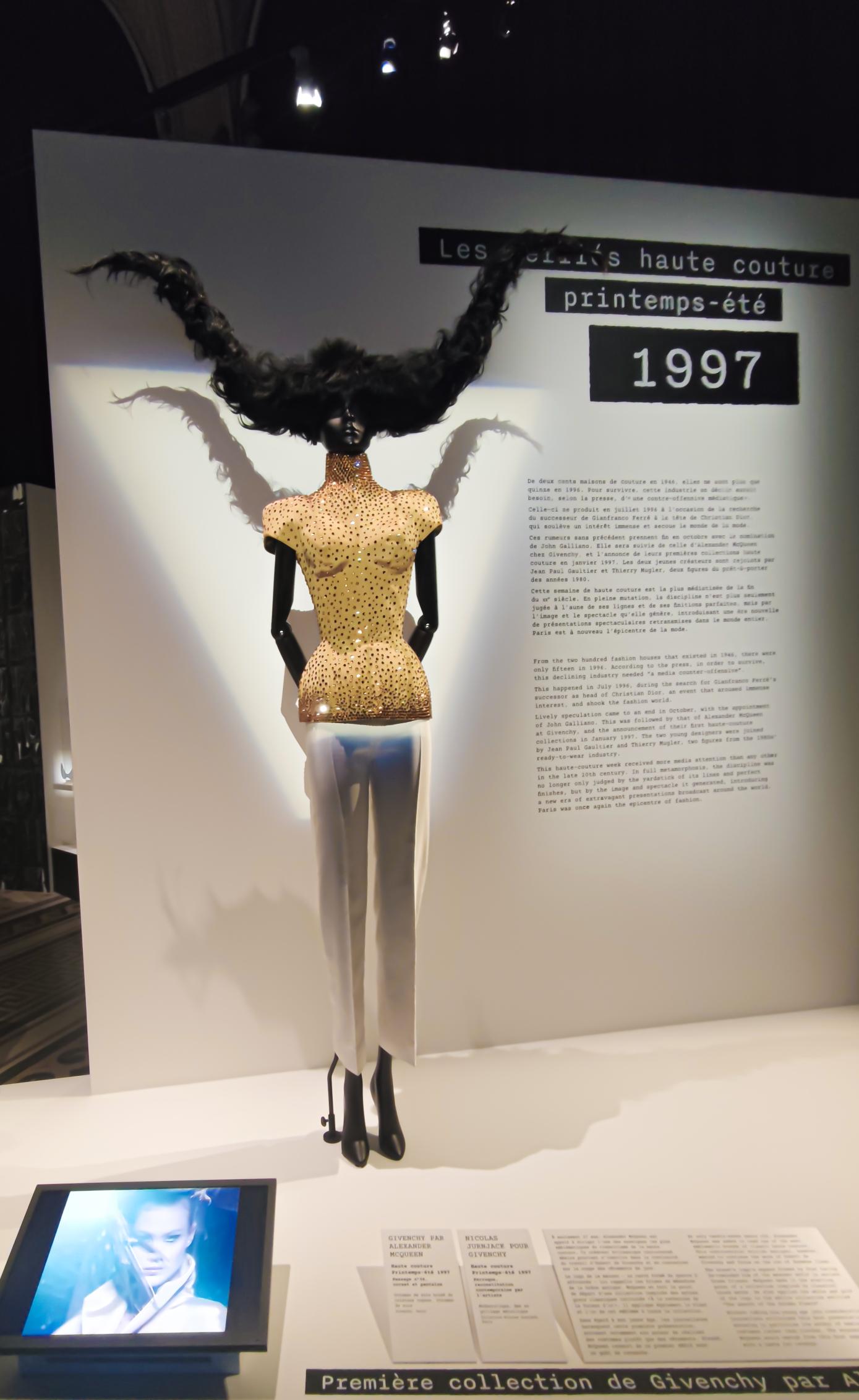

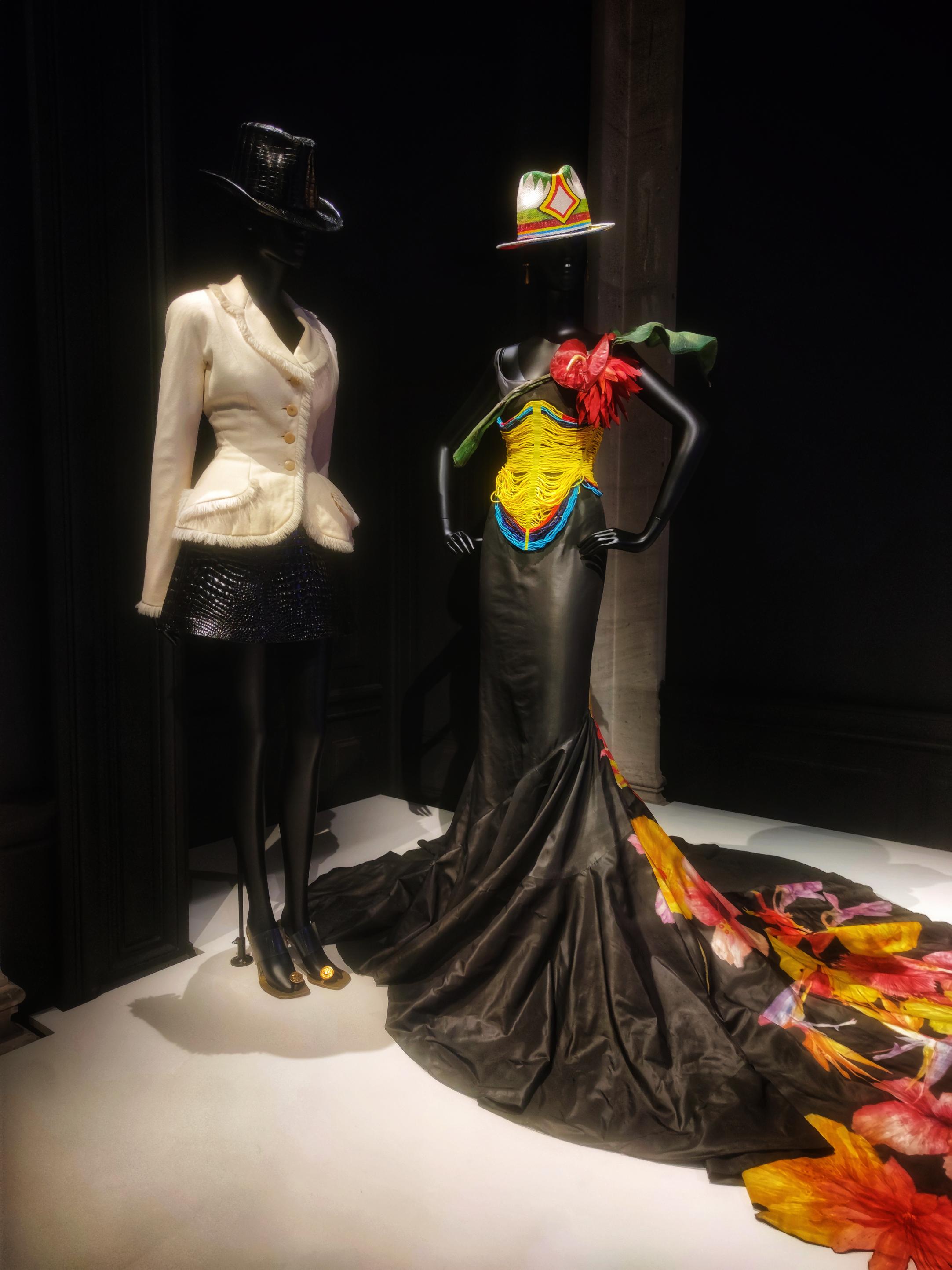
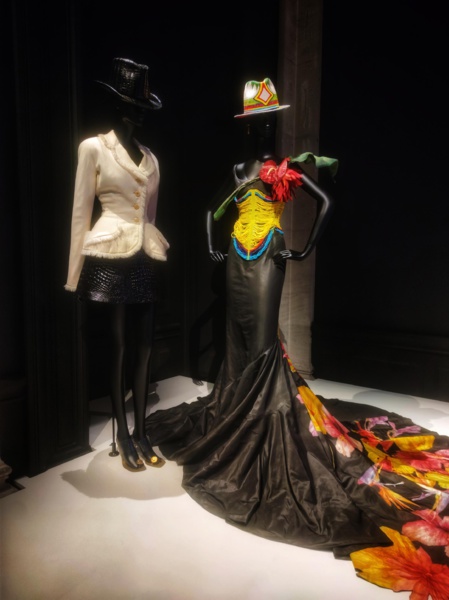
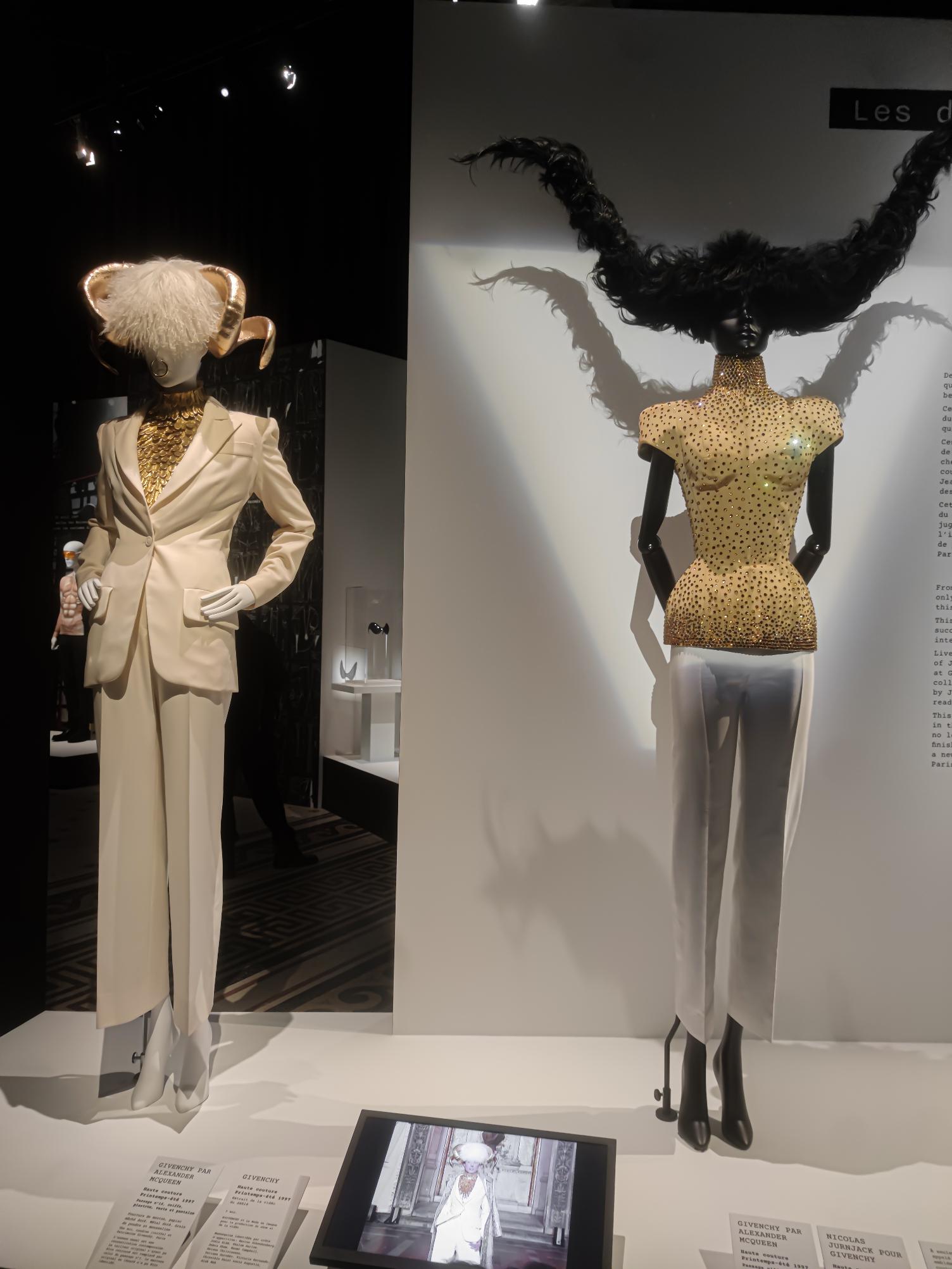
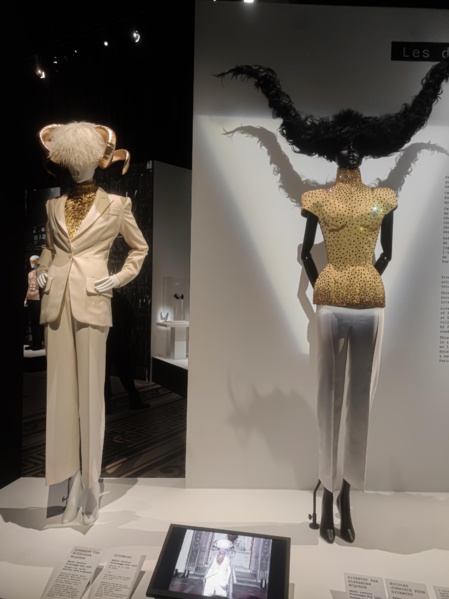







 Wanderlust Chronicles: The 5 Best Dining Experiences on Mariner of the Seas
Wanderlust Chronicles: The 5 Best Dining Experiences on Mariner of the Seas








